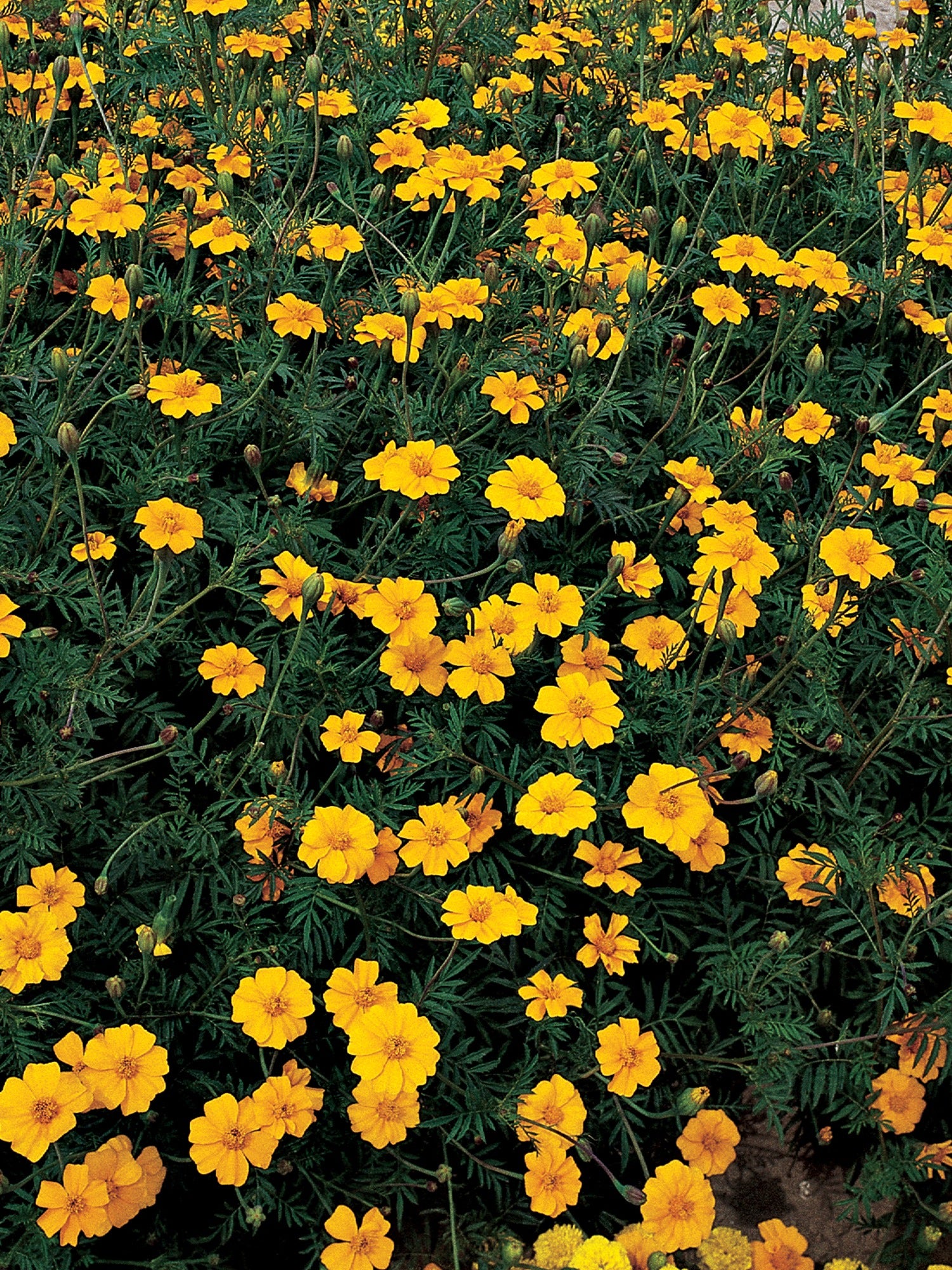I'm a professional gardener, and this is my go-to plant for natural pest control and attracting pollinators
Marigolds featured heavily in all the vegetable gardens I worked in as a professional kitchen gardener, as they are not only beautiful but super useful plants, too

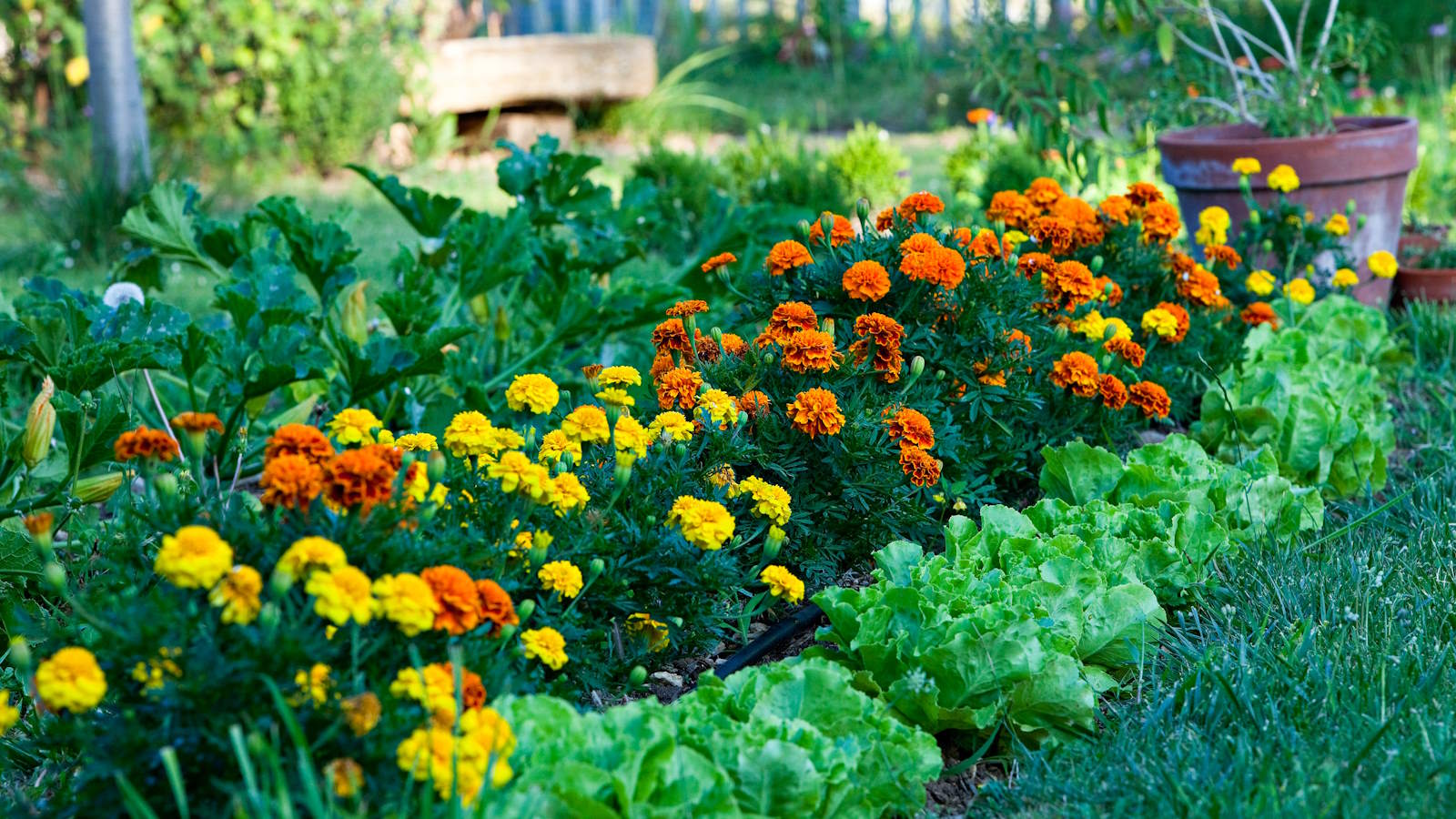
Marigolds deserve a place in any vegetable garden. They are ideal to grow with vegetables for multiple reasons. Not only do marigolds look great, but they are also edible and fantastic additions as a companion plants in any vegetable garden.
I have always grown marigolds in my vegetable gardens. They featured in all the kitchen gardens I worked in and I also grow them in my home vegetable plots.
The best types for a vegetable garden are French marigolds (Tagetes patula) and the signet, or gem, types. They are smaller-growing marigolds, compared to the large and statuesque African marigolds, and can be utilized in many ways around your crops.
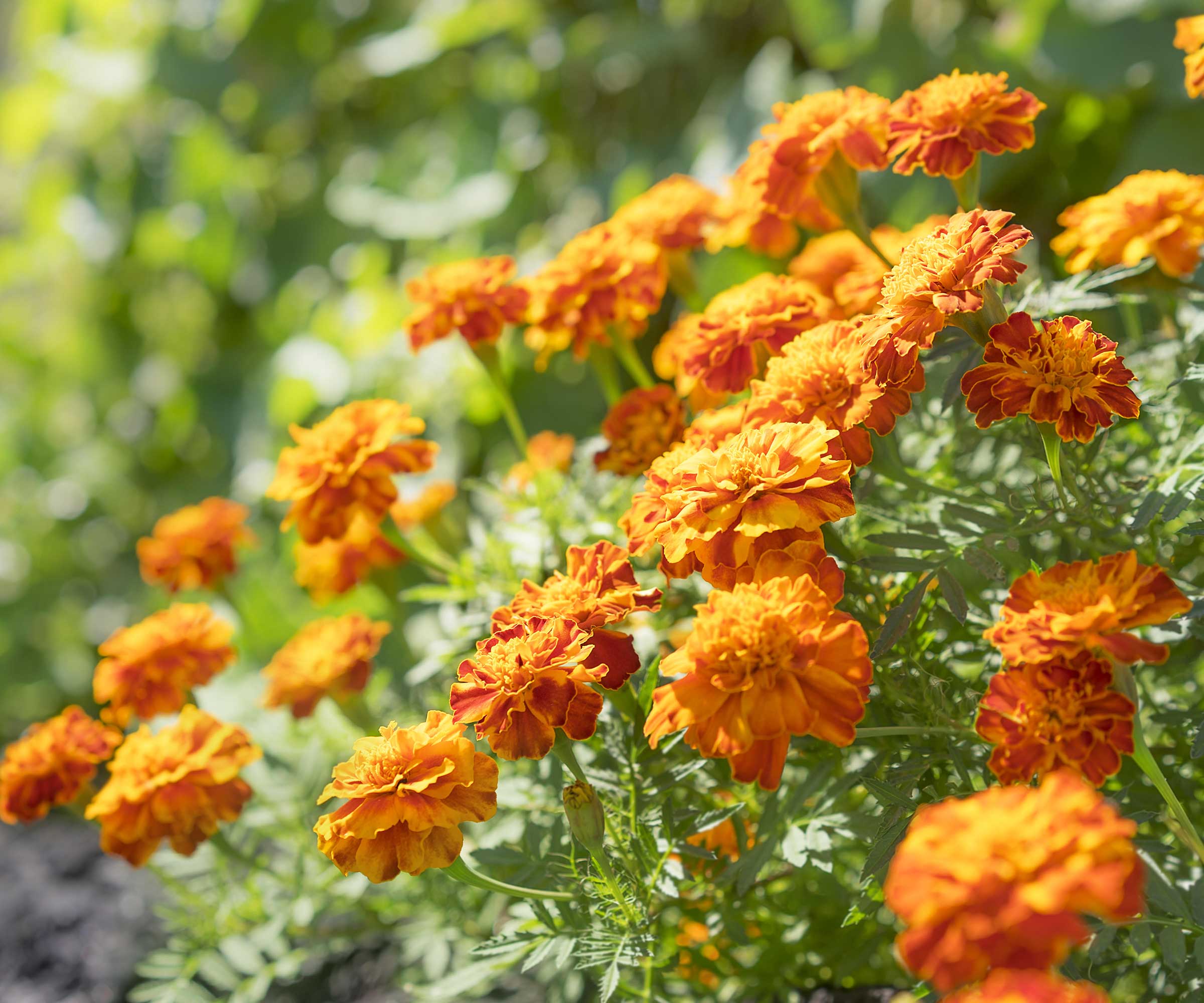
Plant marigolds in a sunny spot in the vegetable garden
Should I plant marigolds in my vegetable garden?
The answer is, yes, I am confident you should plant marigolds in a vegetable garden. I have found them versatile, productive, and practical plants over my years of using them in kitchen gardens. To help you admire marigolds as much as I do, I look at four ways to use them in a vegetable garden and the benefits they will offer.
Plant them around the edges of beds
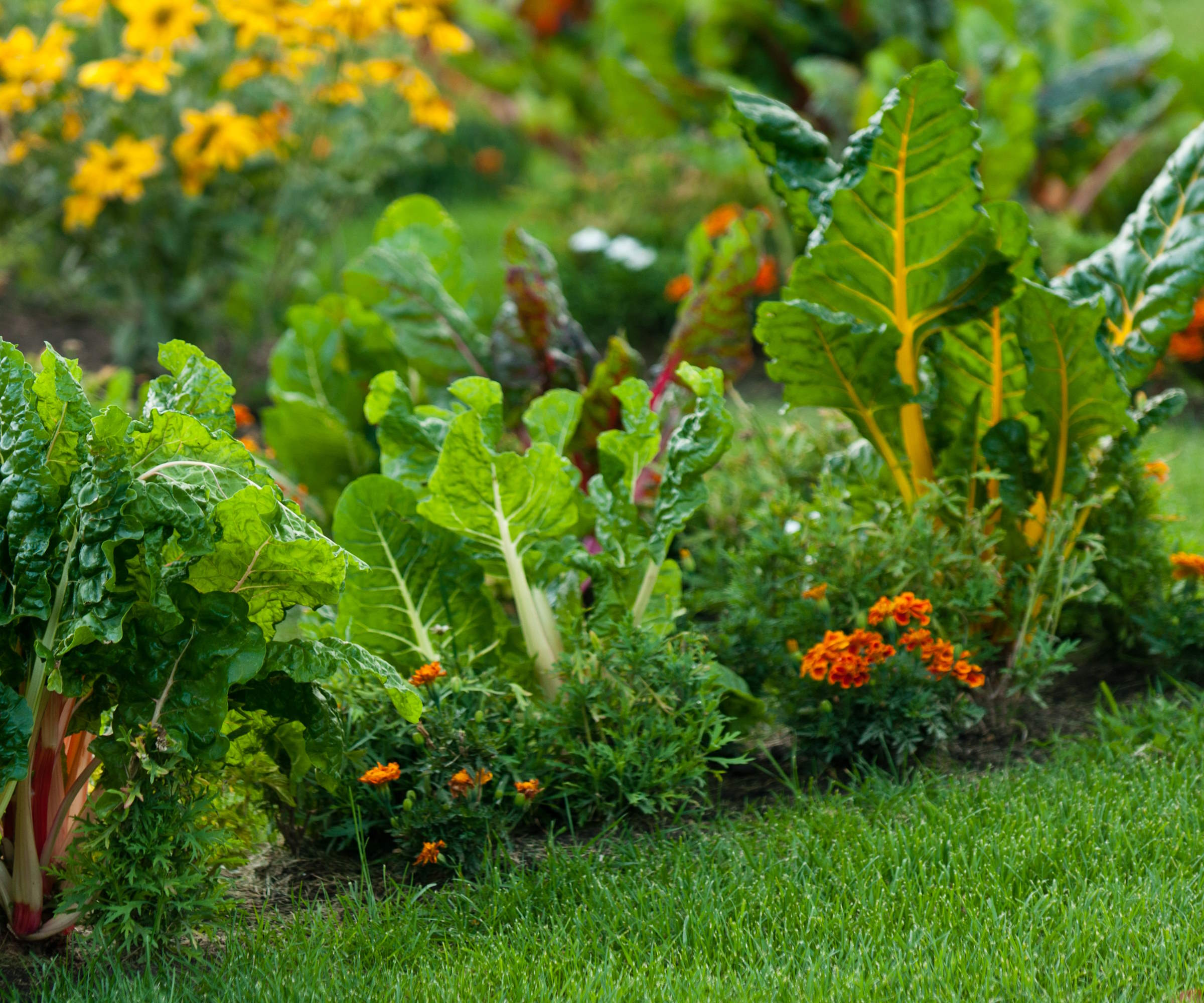
Plant marigolds with Swiss chard in a vegetable garden
Marigolds will look fabulous planted as bright and colorful borders around your vegetable beds or raised garden beds.
The vivid blooms in shades of yellow, orange, and red are great flowers to attract bees and other pollinators into your vegetable garden. They also flower for a long period - especially if you deadhead marigolds to keep them blooming - and will bring those beneficial insects into your garden throughout the season. Having more bees and pollinators means your vegetable plants will stand a higher chance of being pollinated and you will be rewarded with higher yields.
As well as insects pollinating your plants, attracting those beneficial insects with marigolds can also be a fantastic form of natural pest control. It can help get rid of aphids and other pests that may trouble your vegetable plants as the insects drawn to the marigold blooms will eat those unwanted visitors to your garden.
Design expertise in your inbox – from inspiring decorating ideas and beautiful celebrity homes to practical gardening advice and shopping round-ups.
Plant them between vegetables
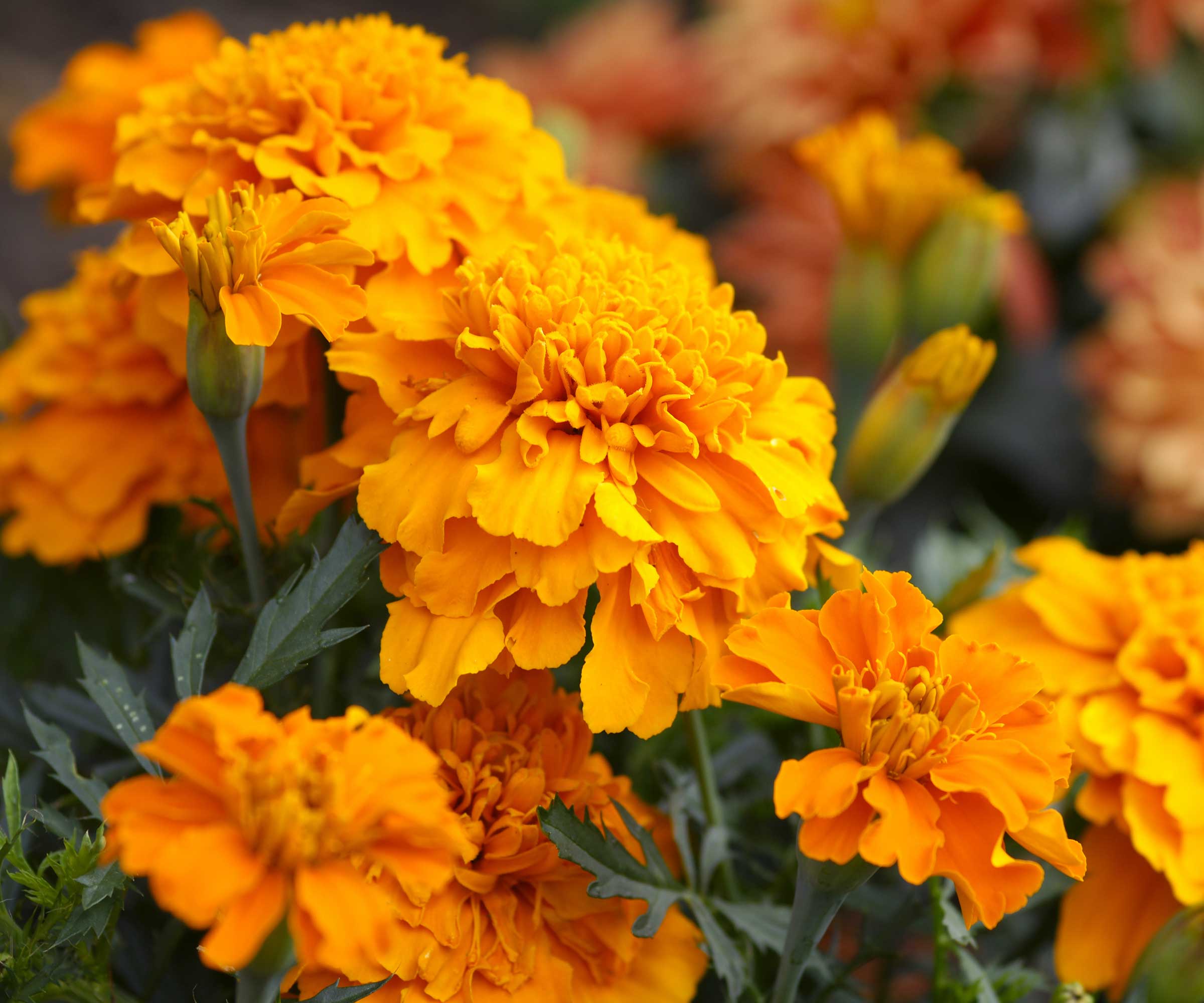
Pollinators are attracted to marigolds planted in a vegetable garden
Marigolds can also do a useful job planted among your vegetables, either individually, in blocks, or as rows between crops.
Marigolds are great for companion planting. Marigolds keep bugs away and are one of the best pest-repellent plants you can add to a vegetable garden. There is a long list of benefits that marigolds offer, including being a fly-repellent plant, wasp-repellent plant, and mosquito-repellent plant. The plant is also reputed to repel cabbage moths, tomato hornworms, squash bugs, and Mexican bean beetles.
They actively repel many insects but also attract others. This means they can also be used as trap plants for pest control. Marigolds can attract those insects and prevent them from affecting other crops they may otherwise wreak havoc on. For example, slugs are attracted to marigolds and the plants can also attract thrips and keep them away from other crops. Find out more about marigolds as trap plants in our guide.
Plant them in a greenhouse

Marigolds make great tomato companion plants in a vegetable garden greenhouse
I always used marigolds as part of planning a greenhouse. I planted particularly pungent varieties of marigolds - including ‘Little Gem’ and ‘Orange Gem’ - as part of pest control for growing tomatoes and chili peppers.
Growing marigolds with tomatoes can protect plants from nematodes in the soil, as well as whiteflies, thrips, and tomato hornworms. The marigolds will thrive in the greenhouse, as they love similar growing conditions to tomatoes and chilis, offering you valuable backup against pests that may trouble the crops.
Plant them in pots and raised beds
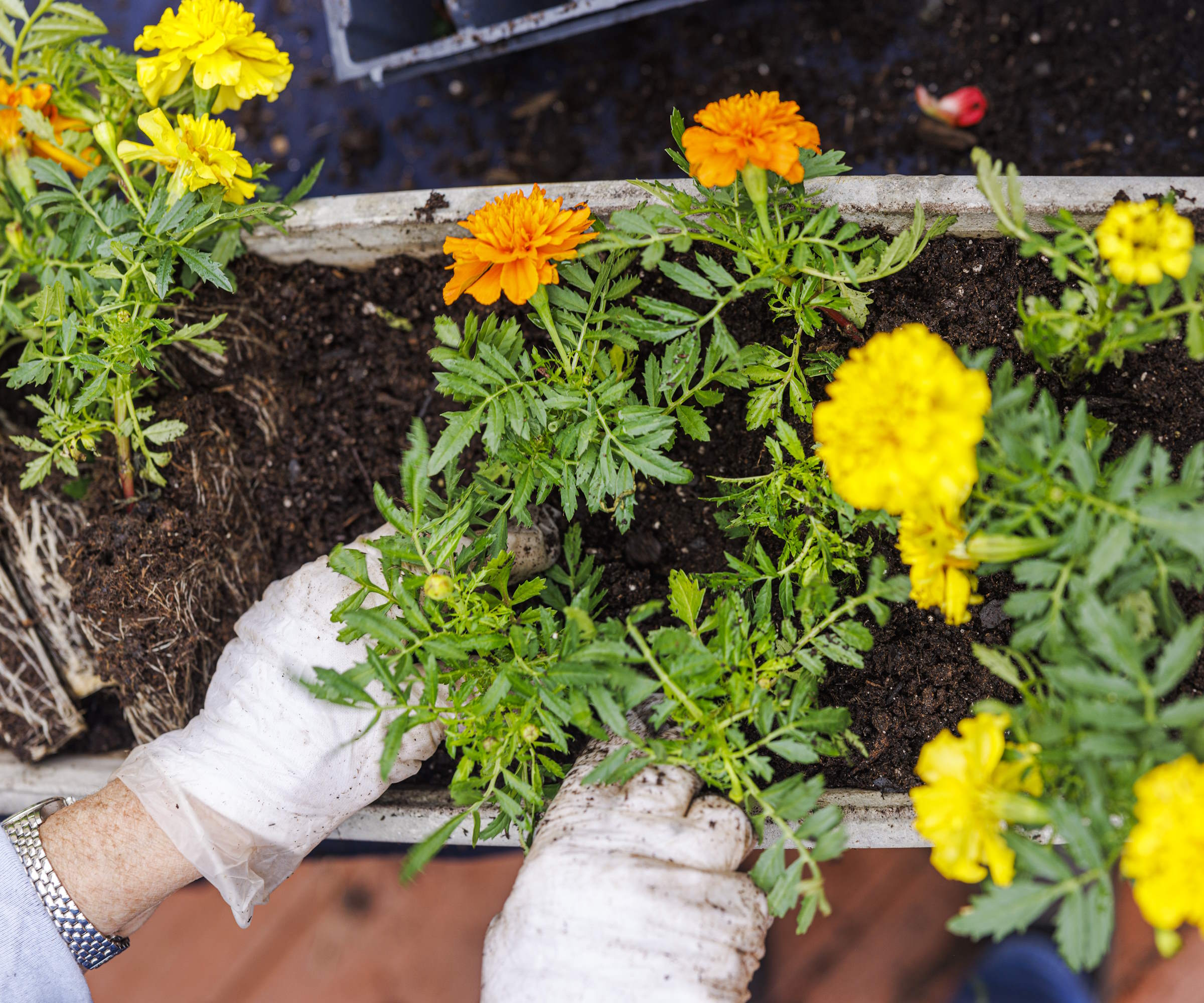
French marigolds will happily grow planted as part of a vegetable container garden
If you have a vegetable container garden, it is still valuable to plant marigolds. You do not need lots of plants to make a valuable difference - especially as the French marigolds boast such a strong odour to repel pests.
Marigolds can be planted around the edges of larger containers or raised beds to offer all the advantages outlined above in terms of companion planting. Alternatively, simply dot some small pots of marigolds around a small vegetable garden.
Shop marigolds
FAQs
What vegetables should you not plant next to marigolds?
Marigolds can benefit many vegetables, flowers, and herbs. Beans are one crop traditionally highlighted by many as poor companions for marigolds. However, marigolds have been shown to have offered positive results against Mexican bean beetles in trials.
How close do you plant marigolds to tomatoes?
It is important to give both plants the space to grow to full size when tomatoes and marigolds are planted together. The marigolds should be planted at least 16-18 inches from the tomato plants.
Marigolds are one of the easiest flowers to grow from seed. They are also fast-growing flowers to grow from seed and can bloom in only 6-8 weeks from sowing. Sow marigold seeds indoors from early spring onwards to have seedlings to plant outside once the frosts have passed. Or you can sow seeds outdoors directly into their growing spot from late spring.

Drew has worked as a writer since 2008 and was also a professional gardener for many years. As a trained horticulturist, he worked in prestigious historic gardens, including Hanbury Hall and the world-famous Hidcote Manor Garden. He also spent time as a specialist kitchen gardener at Soho Farmhouse and Netherby Hall, where he grew vegetables, fruit, herbs, and cut flowers for restaurants. Drew has written for numerous print and online publications and is an allotment holder and garden blogger. He is shortlisted for the Digital Gardening Writer of the Year at the 2025 Garden Media Guild Awards.
